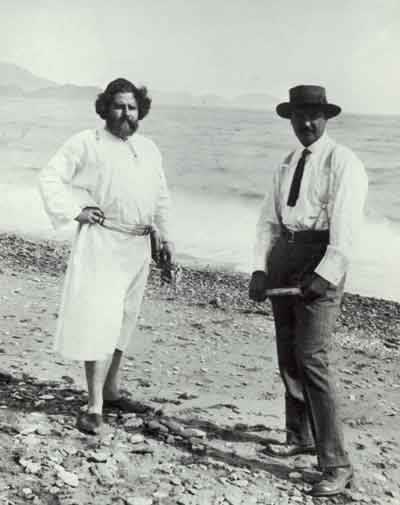Aristarkh Lentulov Russian, 1882-1943
Aristark Lentulov was a prominent figure of the russian avant-garde and cubist painter. He is also known for his spectacular theater set designs. His work was a turning point in the development of the russian Cubo-Futurism.
Aristarkh Lentulov studied at the Penza Art School in 1900, which he left shortly after due to a quarrel with a teacher. He registered as an auditor at the Art School of Kiev but was expelled for absenteeism, and returned to the Art School in Penza.
From 1905 to 1910 he studied under Dmitry Kardovsky in Saint Petersburg. In 1911–1912, he attended the classes of Henri Le Fauconnier and Jean Metzinger at the Académie de La Palette in Paris. Around the same time Lentulov helped organise and participated in an exhibition of the Knave of Diamonds group with Piotr Konchalovsky, Iliya Machkov and Robert Falk.
Aristarkh Lentulov’s was influenced by the simplicity of traditional Russian art, as well as cubism and French artists, such as Henri Le Fauconnier, Paul Cézanne and Henri Matisse. He was a colourist at heart, an inclination which grew even more pronounced after he discovered the work of Matisse. The impressionist style of his early works gave way to a Cezannian period. The energetic use of complex volumes and the daring colour scheme of his paintings illustrate well the influence of Paul Cézanne on Lentulov.
Lentulov remained deeply rooted in Russian tradition, one of his favourite subjects was Russian churches. He developed this interest in religious architecture throughout his career, the structure of wich helped shape a more rhythmic approach to landscape. After 1917 he reverted to painting in a colourful expressionist manner. From 1920, however, he had to comply with the guidelines dictated by the Soviet cultural establishment, which were in total opposition with his art until then. A time during which he had proven himself to be one of the most experimental Russian artists of his time.

